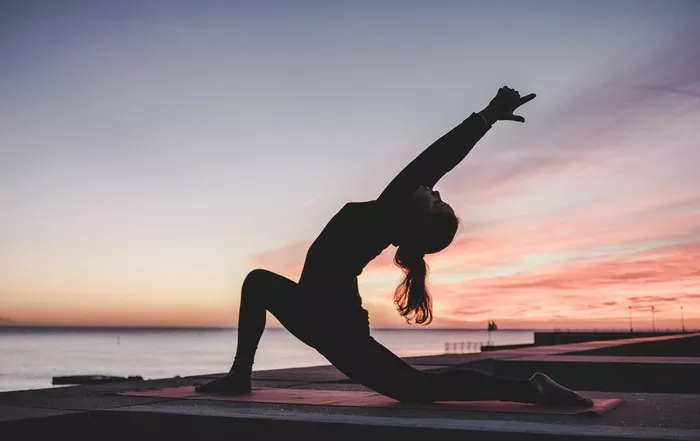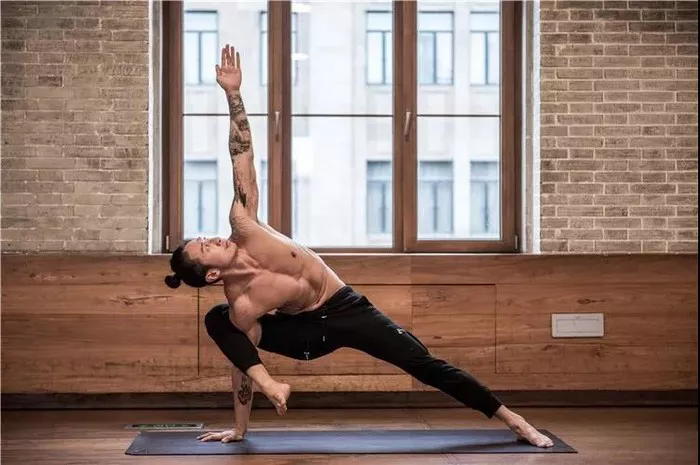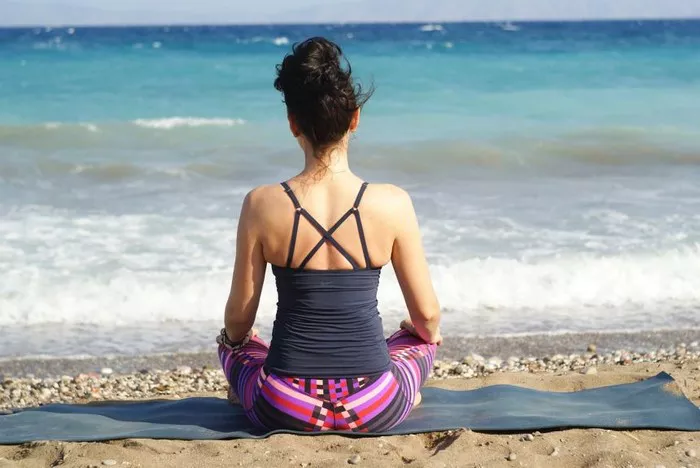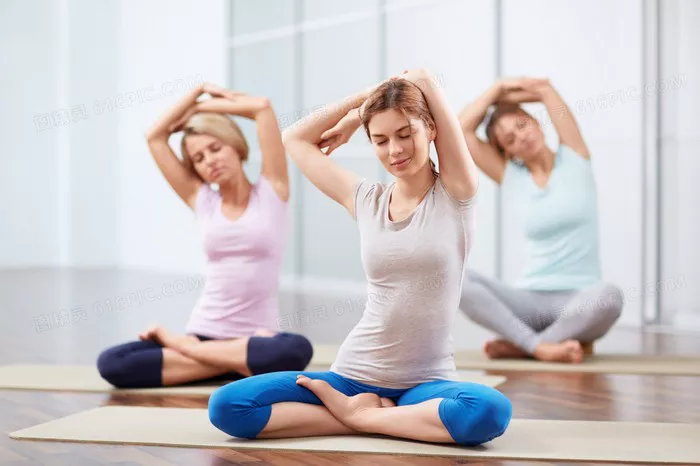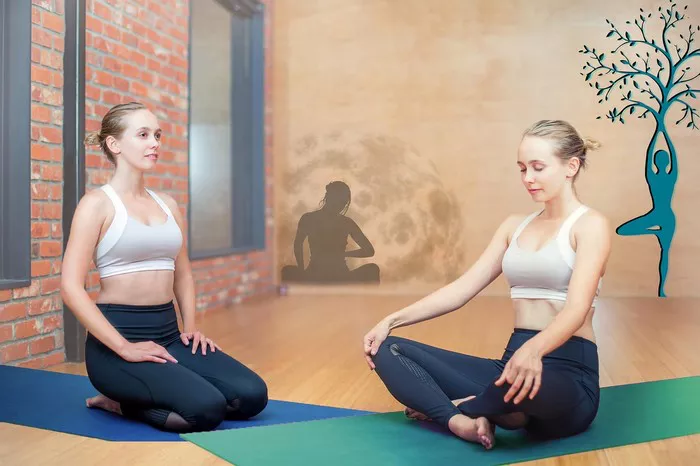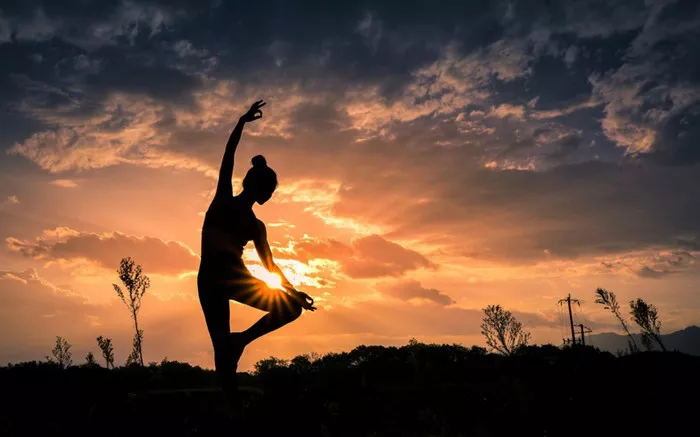Pyramid Pose, also known as Parsvottanasana in Sanskrit, is a standing forward fold with one leg extended behind the body, while the other leg is bent in front. The pose seems deceptively simple at first glance, but many practitioners, especially beginners, often struggle with it. If you’ve ever found yourself in Pyramid Pose, feeling like you’re not quite getting the full benefits, or you experience discomfort or tightness, you’re not alone. This article will explore why Pyramid Pose can be so challenging, breaking it down step by step and offering insight into its mechanics and the benefits it provides.
What Is Pyramid Pose?
Before delving into why Pyramid Pose can be tough, let’s first understand its technical aspects. Pyramid Pose is a standing posture that involves several key elements:
One foot is positioned forward, the knee is bent, and the other leg extends straight back, with the heel firmly planted.
The torso folds over the front leg, creating a deep stretch in the hamstrings, calves, and spine.
The arms can either be extended toward the floor, reaching the hands to the mat, or placed behind the back, clasping the hands together.
The stretch targets multiple parts of the body, including the hamstrings, calves, hips, back, and chest. It improves flexibility, balance, and overall body awareness.
Despite the apparent simplicity of this posture, it’s one that often leaves practitioners feeling challenged. Below, we’ll explore why Pyramid Pose is so difficult and what you can do to overcome these challenges.
Key Challenges in Pyramid Pose
Tight Hamstrings One of the most common challenges in Pyramid Pose is tightness in the hamstrings, the muscles located at the back of the upper leg. As you fold forward, the hamstrings are stretched, and if they are tight, this can make it difficult to bring the chest closer to the thighs. This is particularly challenging for people who spend a lot of time sitting, as prolonged sitting shortens the hamstrings and reduces flexibility.
Tight hamstrings can limit the depth of the forward fold, making the pose feel uncomfortable. In some cases, it may even cause strain in the lower back, as the body compensates for the lack of hamstring flexibility.
Solution: Regular hamstring stretching can help alleviate tightness. Incorporating poses such as Downward Dog, Forward Fold, and other hamstring-opening postures into your practice can improve flexibility over time. Additionally, using props like yoga blocks under the hands can offer support and prevent overstretching.
Hip Flexor Tightness Pyramid Pose also requires the hip flexors to open, particularly in the back leg. The front leg is bent, and the back leg is straight, which creates a deep stretch in the hip flexors. However, many people have tight hip flexors due to prolonged sitting or a lack of hip-opening exercises in their routine. Tight hip flexors can make it difficult to square the hips and align the pelvis correctly.
When the hip flexors are tight, the back leg may not fully extend, or the pelvis may tip forward. This can lead to misalignment, preventing you from achieving the ideal stretch.
Solution: Incorporating poses that specifically target the hip flexors, such as Low Lunge (Anjaneyasana) or Crescent Lunge (Crescent Pose), can help release tightness. You may also benefit from deep breathing exercises that promote relaxation in the hip area.
Limited Spine Flexibility Pyramid Pose involves a forward fold that requires significant spinal flexibility. Many people have tightness in the lower back or upper back, which can prevent them from folding deeply and keeping the spine straight. Without sufficient spinal mobility, it’s easy for the back to round, especially as you try to bring your chest closer to the thigh.
When the spine is not properly aligned, it can lead to strain or discomfort, particularly in the lower back. Additionally, a rounded back can interfere with the stretch you’re meant to feel in the hamstrings.
Solution: Focus on strengthening and lengthening the spine through poses like Cat-Cow (Marjaryasana-Bitilasana), Cobra (Bhujangasana), and Sphinx Pose (Salamba Bhujangasana). These poses can help improve spinal mobility and encourage a straight back in Pyramid Pose.
Balance and Stability Since Pyramid Pose requires one leg to be firmly planted on the ground while the other extends back, balance becomes a significant challenge. The posture requires stability in both the front and back legs, as well as the torso, which can be difficult if you lack core strength or if your focus wavers. Some practitioners may feel unsteady, especially if they have tightness in their legs or hips, which can affect their ability to maintain equilibrium.
Solution: Work on your balance by practicing standing postures like Warrior I (Virabhadrasana I) or Warrior III (Virabhadrasana III). Strengthening the core and engaging the legs during the pose can improve your stability. Don’t be afraid to use props, such as blocks, to help you feel more grounded.
Limited Ankle Mobility In Pyramid Pose, the back foot must remain firmly rooted to the ground with the heel pressing into the mat. However, some people have limited ankle flexibility or mobility, which can prevent them from achieving proper alignment. If the ankle lacks the necessary mobility, the heel may lift off the floor or the foot may roll inward, causing instability and discomfort.
Solution: Working on ankle mobility through exercises such as ankle circles, calf raises, or seated forward folds can help increase flexibility in the ankles. Ensuring that the back heel is properly grounded in the pose is crucial for maintaining the integrity of the posture.
Mental Focus and Alignment Many people find it difficult to hold their attention while in a pose like Pyramid Pose. The challenge is not only physical but also mental. Aligning the body properly while maintaining deep and steady breathing requires concentration and awareness. If you’re not fully engaged in the posture, you may struggle with proper alignment, which can lead to discomfort or misalignment.
Solution: Cultivate mindfulness in your practice by focusing on your breath and body. Engage in deep breathing exercises, and use cues to check in with your alignment—keeping the hips squared, the spine long, and the legs engaged.
The Benefits of Pyramid Pose
Despite its challenges, Pyramid Pose is an incredibly rewarding posture that offers numerous benefits to both the body and mind:
Improved Flexibility: Pyramid Pose stretches the hamstrings, calves, and hip flexors, helping to improve lower body flexibility over time.
Stronger Core and Legs: The balance required in the pose strengthens the core and legs, especially the quadriceps and glutes, which support the torso in the forward fold.
Spinal Lengthening: The forward fold and straight spine help promote spinal lengthening and decompression, improving posture and reducing back tension.
Enhanced Focus: The mental challenge of aligning the body and maintaining balance builds mental clarity, concentration, and focus.
Improved Digestion: The forward bend stimulates the abdominal organs, which can aid in digestion and promote a sense of calm.
How to Improve in Pyramid Pose
While Pyramid Pose can feel difficult at first, consistency and practice can help you overcome its challenges. Here are a few tips to help you improve your practice:
Take It Slowly: Don’t push your body too hard in the beginning. Take time to ease into the posture, using props or taking breaks when needed. Over time, your flexibility and strength will improve.
Use Blocks: If you find it difficult to reach the floor with your hands, place yoga blocks under your hands for support. This will help you maintain proper alignment and avoid straining the body.
Work on Hip and Hamstring Flexibility: Incorporate hamstring and hip flexor stretches into your routine to improve flexibility in the key areas of the pose. Deep stretches such as Forward Fold and Hip Flexor Stretches will help you progress.
Engage Your Core: Keep the core engaged to support your balance and stability. This will help protect the lower back and make the pose feel more accessible.
Use Your Breath: Focus on slow, deep breathing throughout the pose. This will help you stay grounded, calm, and aware of your body’s alignment.
Conclusion
While Pyramid Pose may seem intimidating or challenging at first, it’s a powerful and effective posture that offers immense benefits for flexibility, strength, and mental focus. The key to mastering the pose lies in patience and consistent practice. By addressing the common challenges—tight hamstrings, hip flexor tension, limited ankle mobility, and balance issues—you can gradually improve your practice and enjoy the full benefits of this transformative yoga pose.
Remember, yoga is a journey. Every practice, no matter how difficult, brings you closer to a deeper connection with your body and mind. So, keep breathing, stay patient, and allow Pyramid Pose to become a tool for growth on your yoga path.
Related Topics:


